1 2022-2023 SEASON The Buddy Holly Hall DANCE
january21,2023 VIENNA A SYMPHONIC 22-23 SEASON SCENES
IN


2 TO FROM The #1 producer of music events in Lubbock, TX Visit our website for a full list of events. ttu.edu/Music | @ttuschoolofmusic schoolofmusic@ttu.edu | 806.742.2270

3 2022-2023 SEASON



4 Perfect Harmony. 1607 Broadway |806.744.8744| 800.378.9179 BenchmarkYourOffice.VisualEdgeIT.com Benchmark is proud to support the Lubbock Symphony Orchestra, a pinnacle of culture and excellence in the community. Enjoy the show, knowing Benchmark is always fine-tuning your office equipment and IT solutions to work together in perfect harmony.
We are ecstatic to welcome you all to the New Year! As we kick off the second half of our season, “Symphonic Scenes,” we are delighted to present our fourth Masterworks program, “A Dance in Vienna.”
Tonight’s concert will include riveting pieces by Dvořák; “Scherzo Capriccioso” and “Slavonic Dance Op. 46 No. 8.” Brahms’ work will also be featured as we perform “Hungarian Dance No. 4” and Schoenberg’s rendition of Brahms’ “Piano Quartet No. 1 in G minor.”

If you are captivated by Dvořák you’re in luck! Next month, both “Lubbock Symphony Presents: Filharmonie Brno” on February 20th and “Catch Me with Dvořák” on February 25th will include more works by Antonín Dvořák; including his “From the New World” Symphony.
As always, thank you for your most generous support for the Lubbock Symphony.
Sincerely,
David Cho Music Director
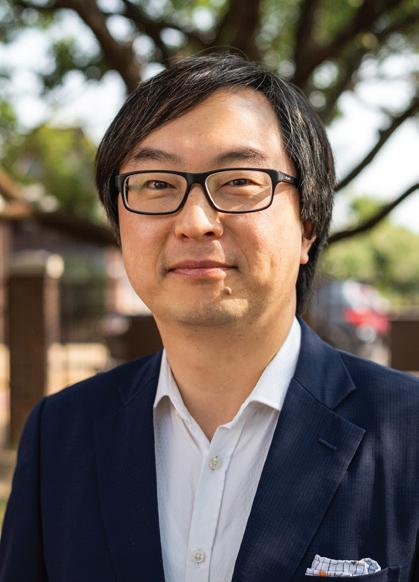
5 2022-2023 SEASON
Dear Lubbock Symphony Family,
A LETTER FROM THE MUSIC DIRECTOR


6
A LETTER FROM THE CHAIR
Dear LSO Patrons,
Welcome to 2023 and the first Masterworks concert of the new year!
We are treated tonight to four stellar works from Johannes Brahms and Antonin Dvořák. Two Bohemian dances from Dvořák and one lively dance from Brahms will fill the hall with beautiful energy and contagious melodies. Four of the Lubbock Symphony’s own Principals highlight the night as they bring Brahms’ Piano Quartet in G minor to life.

Performances like tonight’s would not be possible without the support of you, our patrons. Thank you for your enthusiasm, your continuing support, and most of all, your attendance tonight.
Next month on February 20th, please join the Lubbock Symphony Orchestra as we welcome one of Europe’s celebrated touring orchestras to The Buddy Holly Hall of Performing Arts and Sciences on their first American Tour. The Filharmonie Brno from Brno, Czech Republic, is making Lubbock one of its few US stops. You won’t want to miss this world-class orchestra.
Thank you for joining us this evening. Now, sit back and enjoy your Lubbock Symphony Orchestra!
Brian Willcutt Chair, LSO Board of Directors
7 2022-2023 SEASON




8 806.794.1131 • 4215 85th Street • Lubbock, TX 79423 325.515.5064 • 5305 Trinity Blvd #F • Snyder, TX 79549 http://www.robinsondds.com Jake Malone, D.D.S. Kelly S. Robinson, D.D.S.
In honor of William A. Harrod

9 2022-2023 SEASON
Founding Conductor of the Lubbock Symphony Orchestra, 1946-1987


10
May
Friday, February 17 | 6:30 in the evening FRAZIER PAVILION ANNUAL GALA Hemmle Recital Hall Texas Tech University School of Music
7, 2023 at 6:00 p.m.
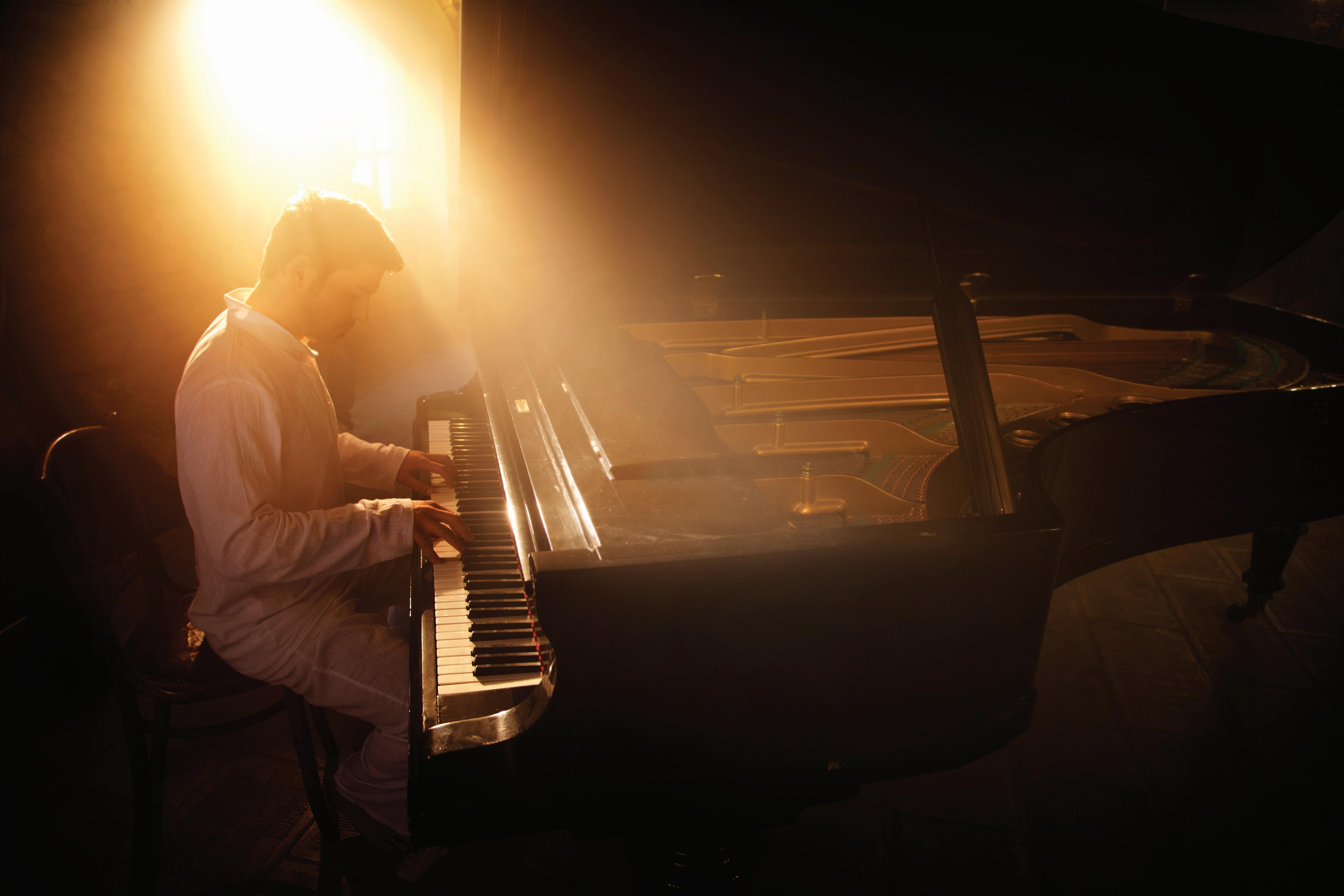



11 2022-2023 SEASON


12 Grace Clinic Gastroenterology & Liver Disease Proud supporters of the LSO 3814 - 22nd Place Lubbock, Texas 79410 806-795-4500
Ghandour M.D., F.A.C.P., F.A.C.G., F.A.A.S.L.D., P.A.
Elias
P.A.
Matthew
P. Soape M.D.,
David In-Jae Cho, Conductor
Winner, 2007 Eduardo Mata International Conducting Competition
Born in Seoul, Korea, David immigrated to the United States in 1985. David received a variety of music lessons during his childhood in Palos Verdes, California, before focusing his energy exclusively on the piano. He later attended Oberlin College and Conservatory, where he received his Bachelor of Music in piano performance. In 1996, David won the E. Nakamichi Concerto Competition at the Aspen Music Festival and was awarded the Arthur Dann Prize at the Oberlin Conservatory.
In 1999, while acquiring his Master of Music in piano performance at the Peabody Institute at Johns Hopkins University, David was invited by Robert Spano and Seiji Ozawa to attend the prestigious Tanglewood Music Center as a Merrill Lynch Conducting Fellow. David was then invited by Larry Rachleff to study at Rice University, where he served as guest conductor for the Shepherd School Orchestras while acquiring his Master of Music in instrumental conducting. David was subsequently invited by the Vienna Philharmonic to serve as an assistant conductor. As the recipient of the Karajan Fellowship, David has enjoyed residencies at the annual Salzburg Festival in Austria. In 2003, David was invited by Leonard Slatkin to participate in the National Conducting Institute, during which time he made his début with the National Symphony Orchestra at the John F. Kennedy Center for the Performing Arts.
During the 2003-2004 season, David was selected to spend a year as the conducting fellow of the New World Symphony under the mentorship of Michael Tilson Thomas. While on tour with the New World Symphony in New York City, David made his Carnegie Hall début conducting works by Copland and Tchaikovsky. During the orchestra’s Rome tour, David made his début at the Academy of Santa Cecilia, conducting works by Luciano Berio and John Adams. David was then invited by his mentor, Larry Rachleff, to serve as the resident conductor of the San Antonio Symphony Orchestra from 2004-2006. During the 20062007 season, David held the Bruno Walter resident conductor chair with the ensemble.
During his tenure as the associate conductor of Utah Symphony | Utah Opera (2006-2011), David won first prize at the Eduardo Mata International Conducting Competition in Mexico City, which resulted in numerous conducting engagements in Europe, Asia, and South America. He has conducted the symphonies of Seattle, Houston, Austin, Memphis, Fort Wayne, Baton Rouge, and Shreveport. He has collaborated with such guests artist as Yo-Yo Ma, Renée Fleming, Joshua Bell, Frederica von Stade, Sarah Chang, Daniel Müller-Schott, Jennifer Koh, Leila Josefowicz, Jennifer Frautschi and Alexander Kobrin. During previous summers, David made appearances at the Aspen Music Festival and the Grand Teton Music Festival.
After heralded guest appearances with the Lubbock Symphony Orchestra in 2007 and 2009, David was appointed as the orchestra’s seventh music director in 2011. He began his tenure with the LSO in the 2012-2013 season and has been actively involved in community engagements.
13 2022-2023 SEASON






14 ON-DEMAND CHARTER FLIGHTS ◊ On-Demand Availability ◊ In-Flight Catering ◊ On-Board Concierge Staff ◊ Ground Transportation ◊ Destination Accommodations Fabian Merizalde, Director of Charter Sales, TX 201.916.5038 | fabian@jettheworld.com Contact Me Today For A Personal Consultation JET THE WORLD is an air charter broker, not a direct air carrier or a direct foreign air carrier in operational control of aircraft. The air service advertised shall be provided by a properly licensed direct air carrier or direct foreign air carrier. Available 24 / 7 / 365 • sales@jettheworld.com • 888.538.7603
Annie Chalex Boyle, violin
Internationally recognized violinist Annie Chalex Boyle has had a wide-ranging career as a chamber musician, soloist, orchestral player, and teacher. Ms. Chalex Boyle has won prizes at the Seventeen Magazine/General Motors National Competition and the Irving M. Klein International String Competition and was a finalist in the Yehudi Menuhin International Violin Competition and the Stulberg International String Competition. She was also the Grand Prize Winner of the Junior Division of the Fischoff Chamber Music Competition.
As a soloist, Ms. Chalex Boyle has been featured in two PBS television documentaries and is heard frequently on NPR’s “Performance Today.” Before moving to Lubbock, she taught violin at the Interlochen Arts Academy in Michigan, played with the Los Angeles Chamber Orchestra, and coached chamber music at the Chicago Symphony Youth Orchestra.
She is an Associate Professor of Violin at Texas Tech University and is Concertmaster of the Lubbock Symphony and Lubbock Chamber Orchestra.

Philippe Chao, viola

Assistant Professor of Viola at the Texas Tech University School of Music, Philippe Chao is a longtime member of the Kennedy Center Opera House Orchestra and the Grand Teton Music Festival and on the viola faculty for the Sewanee Summer Music Festival. He performs with the Pittsburgh, National, and Baltimore Symphonies.
Mr. Chao has performed on NPR’s Performance Today with Fred Childs and on Broadway in Steve Martin and Edie Brickell’s Bright Star. His chamber music collaborations have included international artists James Buswell, Simone Porter, and Julian Rachlin.
He has commissioned and premiered works by Sergey Akhunov and Adolphus Hailstork.
15 2022-2023 SEASON
Hands-Free KTTZ

You love Bach in black tie, but have you tried Sibelus in slippers? Beethoven à la bubble bath? Dvořák with your favorite doggo?
Locally-curated classical content is now available via voice command— wherever you are. Just tell your smart device to play KTTZ-HD2, and start that soaker!

16
•••••••••••••••••••••••••••• •
Michael Newton, cello
Michael Newton is a lifelong resident of Lubbock and has been a member of the Lubbock Symphony Orchestra’s cello section since the 1991-1992 season. Mr. Newton is in his sixth season as Principal Cello of the orchestra. In addition to performing with the LSO, Mr. Newton has been an orchestra director for the Lubbock Independent School District for the past fifteen years, and he is currently teaching at his alma mater, Atkins Middle School. He has also recently served as an adjunct cello instructor at both Lubbock Christian and Wayland Baptist Universities.

Michael attended Texas Tech University, earning both a bachelor’s and a master’s degree in Cello Performance. Mr. Newton was a charter member of the Lubbock Youth Symphony Orchestra. Over the years, he has performed with many regional orchestras, such as the Abilene Philharmonic, Amarillo Symphony, Midland-Odessa Symphony, and San Angelo Symphony.
Richard Fountain, piano
Richard Fountain is Associate Dean and Professor of Piano in the School of Creative Arts at Wayland Baptist University in Plainview, TX. He serves as chair of the Department of Music and teaches entrepreneurship, applied and collaborative piano, and piano pedagogy in both traditional and online formats.

Fountain is one of very few pianists to perform the complete cycle of Franz Liszt’s monumental transcriptions of Beethoven’s nine symphonies. He is also devoted to American piano music from all eras, as well as the poetic and religious music of Liszt.
Fountain is President of the Texas Music Teachers Association, serves on the U.S. State Department’s Fulbright Specialist Roster, and was inducted into the Steinway & Sons Teacher Hall of Fame in 2021. Fountain holds the position of Principal Keyboard with Lincoln’s Symphony Orchestra and the Lubbock Symphony Orchestra.
17 2022-2023 SEASON
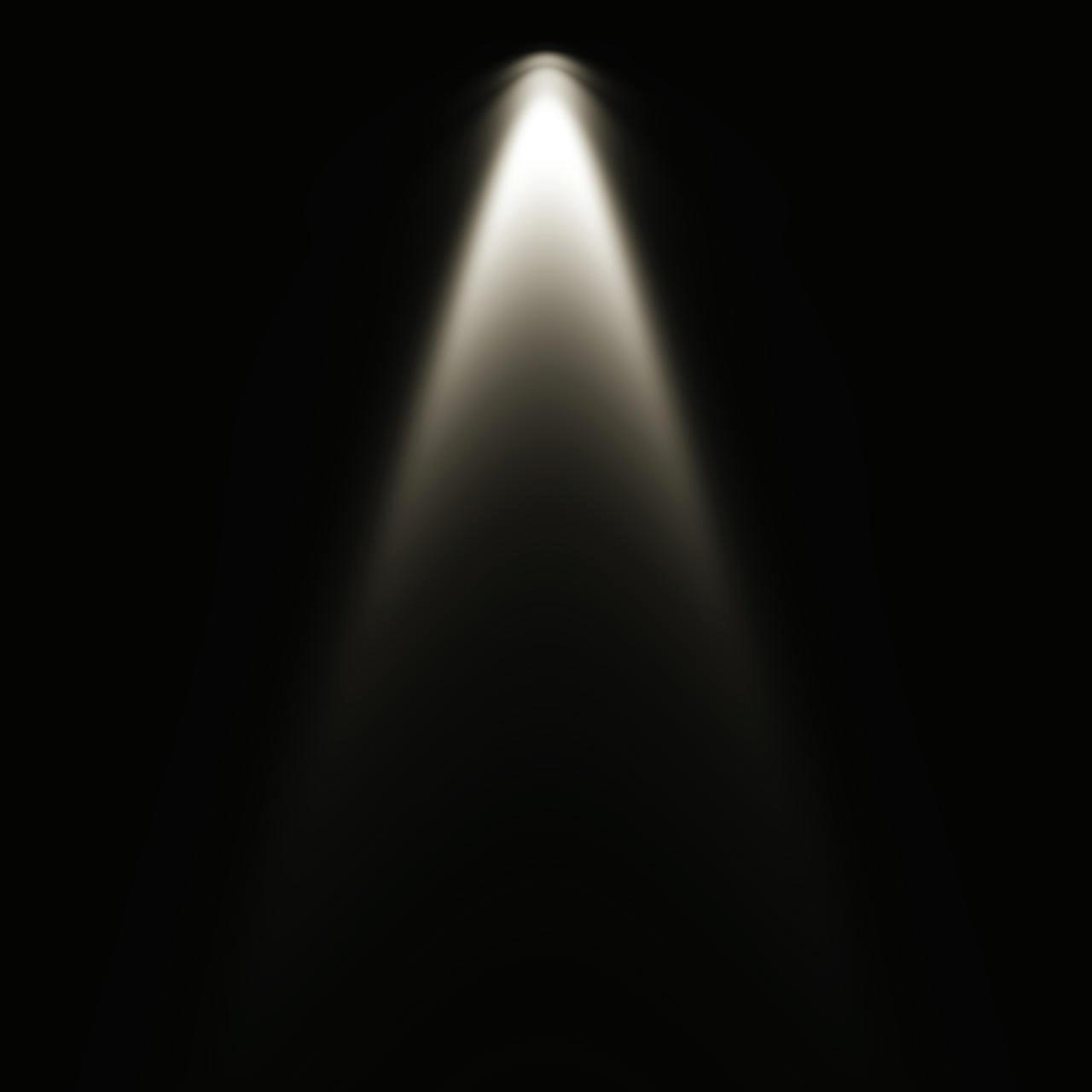





19 2022-2023 SEASON
LUBBOCK SYMPHONY ORCHESTRA
Conductor
David Cho
The CH Foundation Endowed Conductor’s Podium
VIOLIN I
Annie Chalex Boyle
Concertmaster
Jones-Saathoff Family Endowed Chair
Linda Lin Associate Concertmaster Diekemper Family Foundation Endowed Chair
Maja Maklakiewicz
Abi Rhoades Lazaro Gonzalez Isaias Ferreira
Rodrigo Esteban Cabrera Francisco Villarroel
Judy Woody Adan Flores Kea Beasley Lynn Ledbetter
VIOLIN II
Lauren Pokorzynski
Principal Justice Phil and Carla Johnson Endowed Chair Saikat Karmakar Assistant Principal Martha Perez James Ellis Shirley Wigley
Yifan Tang
Cassidy Forehand Carroll Jane Goodyear Texas Tech University School of Music Endowed Performer
Daniel Xue
Nilschmid Jimenez
Shawn Earthman
VIOLA
Philippe Chao Principal
Mary M. Epps and Ralph E. Wallingford Endowed Chair
Israel Mello

Sharon Mirll
Gwendolyn Matias-Ryan Sera Jung
Ryellen Joaquim
Marian Herrero Brian Gum
CELLO
Michael Newton Principal Mary Francis Carter Endowed Chair
Danny Mar Alejos Anaya Madeline Garcia Neemias Santos
Daria Mi´skiewicz
Yuhan Shi Anthony Newton
DOUBLE BASS Mark Morton Principal Eugene and Covar Dabezies Endowed Chair Griff Miller
Boyce Wyrick Hannah Macgillivray Stuart Anderson Christopher Arcy
Flute
Eric Leise Principal Crew of Columbia, STS-107 Endowed Chair Susanna Self Spencer Hartman
PICCOLO Spencer Hartman
20
OBOE
Amy Anderson
Principal
Lubbock Symphony Guild Endowed Chair
Alex Hyde
ENGLISH Horn
Susetta Rockett Janeen Drew Holmes Endowed Chair
Clarinet
David Shea Principal Christine Polvado and John Stockdale Endowed Chair Sara Hoffman
E-Flat Clarinet Hsiao-Ju Chen
Bass Clarinet Ryan Rodarte
BASSOON
Vince Ocampo
Principal Nancy and Tom Neal Endowed Chair Adam Drake
ContraBASSOON
Ian Resurreccion
Horn
Yu-hsuan Chang
Principal Anthony and Helen Brittin Endowed Chair David Lewis Lucian Hutchinson John Stacy Jack Mellinger
TRUMPET
Gary Hudson
Principal Stacey and Robert Kollman Family Endowed Chair Joe Vandiver
Trombone Jim Decker Principal Larry and Lucy Landusky Endowed Chair
Bruce Keeling bass
Trombone
Darin Cash Tim and Mary Jane Sampson Endowed Chair
Tuba
Kevin Wass
Principal Diekemper Family Foundation Endowed Chair
TIMPANI
Lisa Rogers Principal Lubbock Symphony Guild Endowed Chair
percussion Erin Martysz PrincipalLisa Rogers/Alan Shinn Endowed Chair
John Frederick Mariah Taller
Harp
Jennifer Miller
Principal Rachel Jean Armstrong Thomas Endowed Chair
Piano
Richard Fountain Principal Edward R. and Jo Anne M. Smith Endowed Chair
21 2022-2023 SEASON



22


23 2022-2023 SEASON is to help you OUR GOAL achieve yours 800.OUR.BANK city.bank Member FDIC ©2022 City Bank.


24

25 2022-2023 SEASON


26

27 2022-2023 SEASON …take the puzzle out of financial planning.® Mark Bass, CFP®, AIF® n Jennifer Coe Dever, CFP®, CRC®, AIF® 7818 Orlando n Lubbock, TX 79423 n 806. 797. 8349 n www.penningtonbass.com All securities and investment advisory services are offered through Cetera Advisors LLC, member FINRA/SIPC, a broker dealer and Registered Investment Advisor. Cetera is under separate ownership from any other named entity. Certified Financial Planner Board of Standards Inc. owns the certification marks CFP®, CERTIFIED FINANCIAL PLANNER™, in the U.S., which it awards to individuals who successfully complete CFP Board's initial and ongoing certification requirements. Pennington, Bass & Associates Connection. Integrity. Service.
Scherzo Capriccioso, Op. 66 | Antonín Dvorák
Scherzo Capriccioso expanded upon the sound world of Dvořák’s “Slavonic Dances” in the same way an artist would expand a small pencil sketch into a full-size oil painting on canvas.
Hungarian Dance No. 4 | Johannes Brahms
Brahms began his touring career at the age of 17! While on tour, the Hungarian and Romani folk music he heard eventually inspired the “Hungarian Dances.”
Brahms wrote two books of “Hungarian Dances,” initially intended as piano duets with fellow composer and pianist Clara Schumann.
Slavonic Dance Op. 46 No. 8 | Antonín Dvorák
“Slavonic Dances” established the young composer as a distinctively Czech musical voice.
For more Dvořák join us on February 20th for “Lubbock Symphony Presents: Filharmonie Brno” and on February 25th for “Catch Me With Dvořák!”
Brahms’ “Hungarian Dances” originally inspired Dvorak’s “Slavonic Dances.”
Piano Quartet No. 1 in G minor | Brahms/Schoenberg
In the original Piano Quartet, the instrumentation consists of piano, violin, viola, and cello.

Schoenberg’s orchestration allows the audience to hear the string instruments versus the piano in a perfect balance.
Brahms’ unique style of alteration to music inspired Schoenberg’s radical thinking of the melodic and harmonic language.
We hope you were able to participate in ClefNotes with John Clare prior to the concert this evening!
The first Native American to lead an all-classical radio station, John Nasukaluk Clare is comfortable behind a microphone, streaming video or playing violin. He is currently the Classical Music Director at WGUC in Cincinnati, and is the weekday morning drive host on SiriusXM’s Symphony Hall. In 2005, he earned the Deems Taylor Award from ASCAP for radio broadcasting, citing his work on 20/20 Hearing. An avid chamber music lover, Clare founded the Las Vegas Chamber Music Society in 2004.
Join us before “Catch Me With Dvořák” for another beginner-friendly discussion with radio host John Clare!

28
30
29 2022-2023 SEASON David Cho | Music Director The CH Foundation Endowed Conductor's Podium Scherzo Capriccioso, Op. 66...........................................................Antonín Dvořák Hungarian Dance No. 4................................................................Johannes Brahms Slavonic Dance Op. 46 No. 8..........................................................Antonín Dvořák Piano Quartet No. 1 in G minor: nale..................................Johannes Brahms Annie Chalex Boyle | violin Philippe Chao | viola Michael Newton | cello Richard Fountain | piano Piano Quartet No. 1 in G minor...................................................Johannes Brahms arr. Arnold Schoenberg INTERMISSION

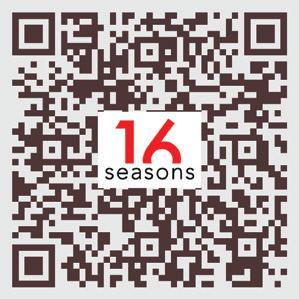
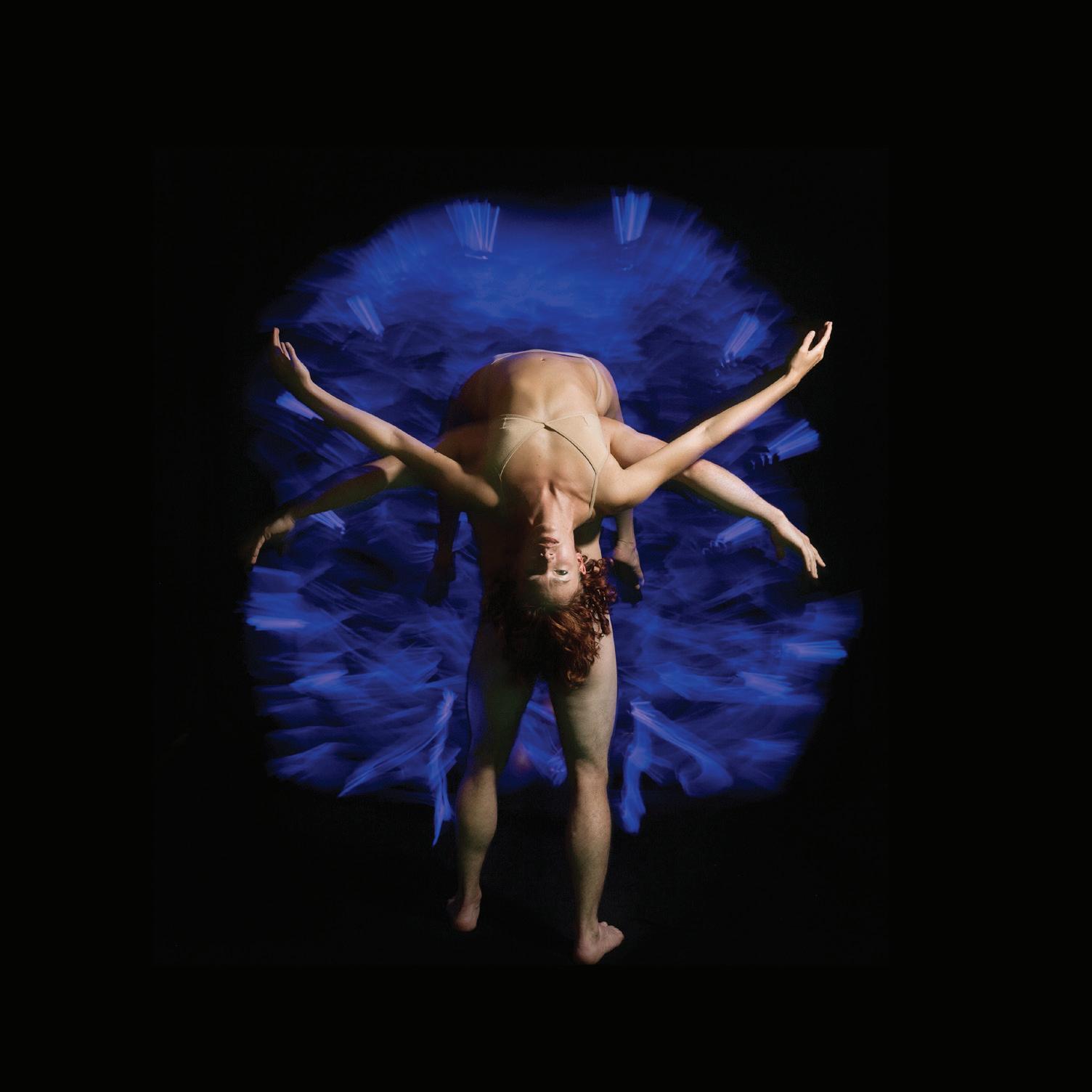

30
31 2022-2023 SEASON


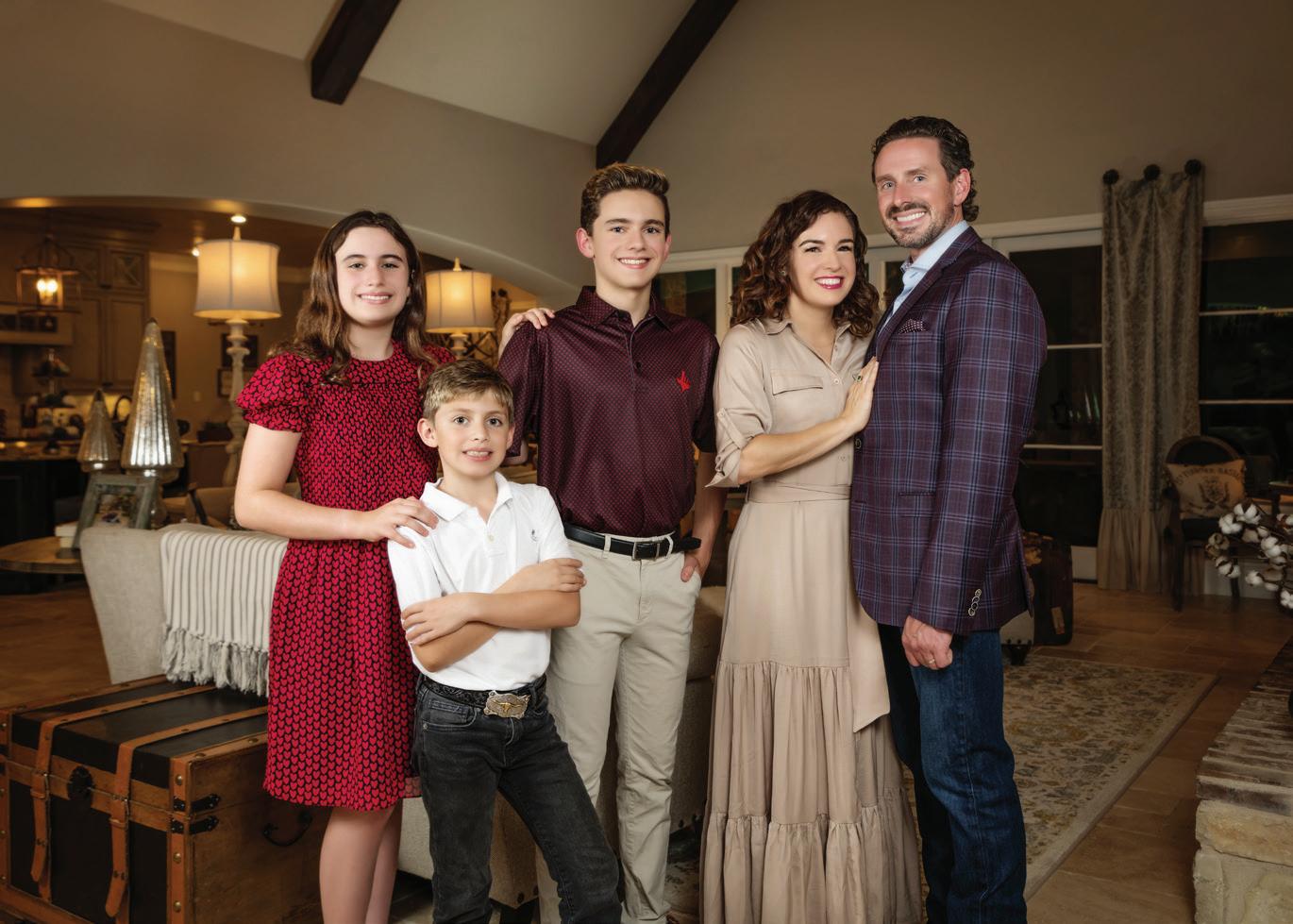
32 806.783.8837 | 4211 85th St, Lubbock, TX 79423 lubbockoralfacialsurgery.com “Love is the soul's music; all its songs are symphonies.” —
Matshona Dhliwayo
PROGRAM NOTES
Shortly after graduating from the Prague Organ School, Antonin Dvořák earned a job as a violist in Prague’s Provisional Theater Orchestra, where he gained invaluable experience as a performer, and where he heard the latest operas and concert music. While performing under the baton of Richard Wagner was a watershed experience for the young composer, even more important was his work with Bedřich Smetana, the father of Czech nationalist music, who became the principal conductor of the Provisional Theater Orchestra in 1866.
Through Smetana’s operatic and orchestral works, Dvořák discovered the rich possibilities of incorporating elements of Czech folk music into his own musical language. His early music captured the attention of Johannes Brahms, and, more importantly, Brahms’ publisher Simrock. With the enormous critical and commercial success of Dvořák’s Slavonic Dances, the young composer established himself as a distinctively Czech musical voice, and his concert and operatic music soon became popular all over Europe.
Dvořák’s mother passed away in December of 1882, and the composer responded with one of his most heartfelt works, the Piano Trio in F minor, Op. 65. While grieving the end of one life, Dvořák’s spirits rose with the beginning of another: the birth of his son Antonín in March of 1883. Buoyed by the affirmation of new life and the success of his choral Stabat Mater in London, Dvořák began work on his Scherzo Capriccioso, a work that would expand upon the sound world of the Slavonic Dances in the same way an artist would expand a small pencil sketch into a full-size oil painting on canvas.
In Scherzo Capriccioso, Dvořák explores a more dramatic style than in the earlier Slavonic Dances, though the newer work bears the same melodic and harmonic stamps. Melodies and rhythms are now more angular, and there is a greater reliance on symphonic development (alteration and manipulation of previous musical material), contrapuntal textures, and orchestral virtuosity, resulting in a musical language of greater depth and sophistication. The textures are further enhanced by the warm sounds of the English horn and bass clarinet, two instruments Dvořák used sparingly in his other music.
The work is a large-scale A-B-A form, but with elements of a symphony movement where ideas are presented in slightly altered form with each subsequent appearance. The brash opening horn call ushers in bouncy, quirky rhythms in the same spirit as the Slavonic Dances. The boisterous opening leads to a lilting waltz tinged with a hint of melancholy, and it is these two ideas, one dramatic, one lyrical, that will form the basis of the entire work. A central chorale-like passage transforms into a second waltz, by turns lyrical and syncopated. The opening music returns, developing the original material in new and colorful ways. A brief cadenza for horn and harp precedes the final rush to the end, and the work ends in ebullient high spirits, with thrilling trumpet fanfares leading the way to the joyous final chords.
33 2022-2023 SEASON
Antonín Dvořák: Scherzo Capriccioso, Op. 66

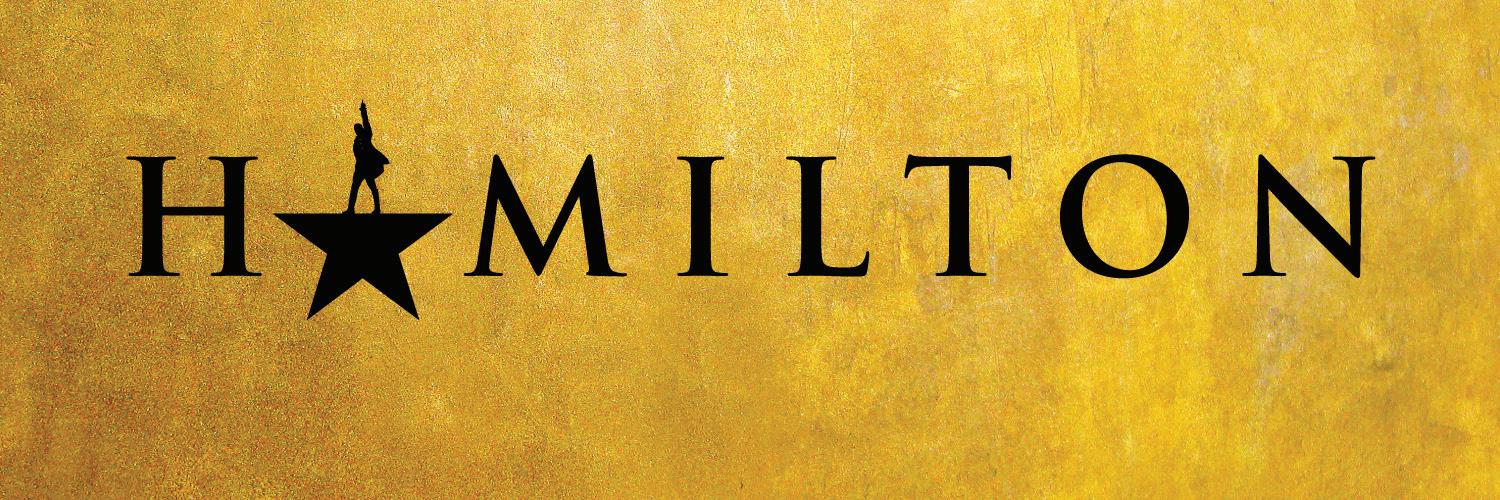
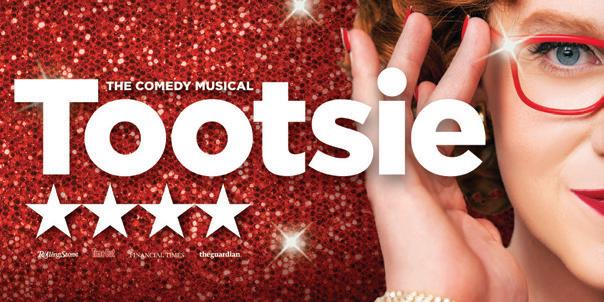


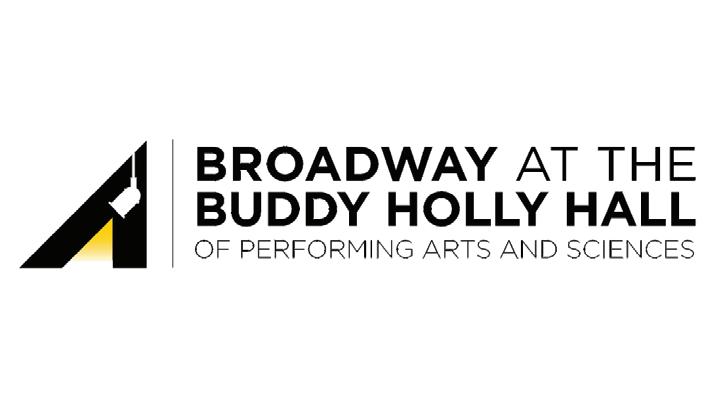







34
No. 4 in F-sharp
Most of us probably imagine that the life of a touring musician is filled with fame and glamour – the best hotels, packed houses, and unending adulation from legions of devoted fans. While this may be the case for a tiny number of touring musicians, the reality is more prosaic, full of travel delays, poor venues, bad lighting, apathetic or belligerent roadies, and many other problems. The stress is made tolerable only by the chance to bring one’s art before a new audience and hopefully leave them feeling a little better after the concert than they did before they arrived.
Johannes Brahms experienced the life of an itinerant musician early in his career when he agreed to undertake an extended European tour with the violinist Ede Reményi. The two musicians first met in 1850 when Brahms was only 17, and Brahms remained the Hungarian violinist’s collaborator for several years thereafter. While their touring life was at times grueling (and Brahms encountered a sordid side of life that kept him a confirmed bachelor for the rest of his days), the young composer was exposed to a wide variety of new music, especially the Hungarian and Romani folk music which Reményi was fond of including in his recitals.
Later in life, with one symphony and numerous songs, piano works, and chamber music to his credit, Brahms returned to his love of these Hungarian melodies, writing two books of Hungarian Dances for piano, four hands. While Brahms originally intended them just for musical evenings with his good friend Clara Schumann, he eventually gave in to the wishes of his publisher Simrock and published them in two volumes, the first in 1869 and the second in 1880. Brahms orchestrated several of the dances; other versions later appeared for orchestra, solo piano, and violin and piano.
While some of the melodies contained in the Hungarian Dances are of Brahms’ own invention, he freely admitted that he had employed many traditional folk tunes in the work. On the title page of the first edition, Brahms insisted that he be listed as an arranger rather than a composer, feeling that his versions were only embellishments on music that he had learned in his youth and had been playing his entire life. He once told a friend that the Hungarian Dances were “genuine gypsy children, which I did not beget, but merely brought up with bread and milk.” Brahms remained fond of these works through his entire life, choosing to record the first dance on a wax cylinder for the Edison Talking Machine Company in 1889.
The fourth dance opens with ardent violins singing passionately over a sighing woodwind accompaniment. Livelier dance music soon dispels the gloom, with a frenzied violin fiddling leading to playful woodwind figures. It is the smoldering opening that has the final say, concluding the lively dancing with a final impassioned flourish.
35 2022-2023 SEASON
Johannes Brahms: Hungarian Dance
minor, WoO 1
CLASSROOMS
“I enrolled in TTU K-12 to have a more flexible schedule to practice viola so I could prepare for college auditions and participate in regional and national music festivals.”

TO
- Atlee Daniel, TTU K-12 class of 2017
FROM CONCERT HALLS
FROM
CLASSROOMS
TO
CONCERT HALLS
Serving students for 30 years, TTU K-12 offers fully online solutions and alternatives for students, schools and districts!


• Award-winning, fully accredited online curriculum
• A-rated by TEA
• More than 200 online asynchronous semester-based courses
• Full-time diploma track with two options: free tuition for qualifying Texas students or tuition-based
• Individual courses and credit by exams that supplement school or homeschool curriculum
• Students can advance academically or graduate early


• Students can recover credits
LEARN MORE AT K12.TTU.EDU/LSO
36
Antonín Dvořák: Slavonic Dance in G minor, Op. 46, No. 8
Long before Facebook, YouTube, Instagram and TikTok, a young musician, especially a budding composer, had to put forth extra effort to be noticed by critics and audiences. Antonín Dvořák was just such a musician, with the additional challenge of growing up in small villages rather than in a cultural mecca like Vienna, Paris or London. Yet his rigorous training and hard work through his youth earned him the post of Principal Viola in the orchestra of the National Theater in Prague, where he spent a decade learning the orchestra from the inside out, continuing to study and compose when his orchestral duties permitted. In 1871, he took a leap of faith and left his secure position with the National Theater to devote more time to composition.
Dvořák achieved his first taste of success in 1873 with a performance by the Prague Choral Society of his patriotic choral work The Heirs of the White Mountain, but even with this triumph his fame as a composer still barely extended beyond the outskirts of Prague. Having married at the end of 1873, he was desperately in need of both a steady income and a career boost. When he learned of a competition for the annual Austrian State Music Prize, he jumped at the opportunity and took no chances concerning the outcome. Most composers would have submitted a composition or two; Dvořák entered fifteen works. His strategy paid off handsomely, winning the 33-year-old composer the first prize of and praise from the judges for his “genuine and original gifts.” Dvořák’s win was no fluke; he entered and won the prize for the following three years.
His music impressed a judging panel consisting of Johann Herbeck, director of the Imperial Opera, the influential (and often acid-penned) music critic Eduard Hanslick, and, most importantly for Dvořák’s career, Vienna’s pre-eminent composer, Johannes Brahms. Brahms introduced Dvořák to his publisher, Fritz Simrock, who published most of Dvořák’s music for the rest of his life.
As a result of Brahms’ advocacy, Simrock was persuaded to publish Dvořák’s Moravian Duets, which achieved sufficient sales that the publisher requested a set of dances for piano duet. Dvořák responded with the first set of his Slavonic Dances, patterned after Brahms’ Hungarian Dances. Dvořák’s dances proved to be so popular that Simrock asked him to arrange them for orchestra. His initial set of eight dances first appeared in 1878 and were given their premiere in Dresden in their orchestral arrangement. Both the orchestral version and the piano duet version were published as Dvořák’s Op. 46. Owing to the continuing popularity of both settings, Dvořák produced a second set of Slavonic Dances in 1886, also in editions for piano duet and for orchestra and published as Op. 72.
Where Brahms borrowed popular Hungarian and Romani melodies for his Hungarian Dances, Dvořák created original tunes in the style of Czech folk music, absorbing the style features of this indigenous music into his own musical vocabulary. Each dance has its distinctive character, from slow and languorous to wild and frenetic, each modeled on dance forms like the mournful dumka and the passionate furiant.
37 2022-2023 SEASON


The Lubbock Symphony Orchestra would like to express gratitude to and
The eighth dance from the Op. 46 collection leaps energetically from the outset, alternating between major and minor in consecutive phrases. Dvořák makes much of the dance’s sophisticated rhythmic interplay; what starts out sounding like a forthright statement in three slower beats suddenly shifts in the ninth bar to a rapid waltz-like idea, an effect known as hemiola. This opening idea permeates the entire dance, alternating between loud and soft, boisterous and playful. The exuberant energy only briefly subsides for a lyrical melody led by flutes and oboes. At the end, the music slows as though giving the dancers time to catch their breath, but suddenly bursts into one final frenzy of jubilant dancing.
Johannes
Brahms/Arnold Schoenberg:
Piano Quartet in G minor, Op. 25
The phrase “old wine in new bottles” seems particularly appropriate in the realm of classical music, where the art of transcribing older music for newer instruments and ensembles is commonplace. Leopold Stokowski brought the music of Johann Sebastian Bach to a whole generation of listeners through his transcriptions of that Baroque master’s organ music for the modern symphony orchestra. Ottorino Respighi’s three suites of Ancient Airs and Dances reclothed lute and keyboard pieces from the Renaissance in the colorful fabric of a chamber orchestra, proving that such a transcription didn’t have use the kitchen sink in order to be musically effective. The British composer Gordon Jacob even titled his wind band reimagining of British folk tunes “Old Wine in New Bottles.” This repurposing of older music was part of the 20th-century trend towards neoclassicism, viewing music of the past through the lens of the present.
For most listeners, the name Arnold Schoenberg conjures up an image of uncompromisingly dissonant music, and perhaps the image of elderly patrons fleeing from concert halls while covering their ears. Yet Schoenberg’s music, radical as it was, grew out of the Classical and Romantic traditions. His earliest works bear the earmarks of Brahms, Wagner, and Mahler, and he was a keen student of the music of the Renaissance and Baroque.
In his 1933 essay “Brahms the Progressive,” Schoenberg argued that Brahms should not only be revered as part of the musical past, but as a harbinger of the music of the future, including Schoenberg’s own innovative compositions. Schoenberg specifically mentioned his admiration for Brahms’ use of “progressive variation,” altering musical material after its initial presentation instead of reserving and restricting those alterations to a particular section of a piece (the development section of textbook sonata/symphonic form). This technique would become a cornerstone of serialism, Schoenberg’s radical rethinking of melodic and harmonic language, a rethinking that would influence concert music for the remainder of the twentieth century.
39 2022-2023 SEASON






40
Schoenberg greatly admired Brahms’ G minor piano quartet, and in 1937 he orchestrated the work at the request of the conductor Otto Klemperer, who gave the first performance of the new version with the Los Angeles Philharmonic that same year. In writing to Alfred Frankenstein, the music critic of the San Francisco Chronicle, Schoenberg explained his rationale behind the orchestration:
1. I like the piece
2. It is seldom played
3. It is always very badly played, because the better the pianist, the louder he plays, and you hear nothing from the strings. I wanted once to hear everything, and this I achieved.
In his orchestration of Brahms’ quartet, Schoenberg manages to achieve a balance between a deep respect for the original work and the innovation of presenting that work from a new perspective. In the opening two movements, a casual listener unfamiliar with the original quartet might well mistake Schoenberg’s version as part of a long-lost Brahms symphony. While more reactionary critics view the inclusion of the unusual sounds (for Brahms) of xylophone and glockenspiel, several orchestral versions of Brahms Hungarian Dances include similar exotic touches. If Schoenberg did not adhere to the letter of Brahms’ style, he certainly honors the spirit of the work, especially in the Romani-inspired finale.
The opening four bars of the first movement, heard in clarinets and answered by strings, serve as the basis for almost the entire movement. A hymn-like melody, presented after a highly agitated transition, sings nobly in the woodwinds over a bustling string accompaniment. While the central development is full of its share of contrapuntal storm and strife, the return of the opening offers no lasting relief from the accumulated tension until the final bars fade to an uneasy silence.
The second movement follows a familiar thread found in Brahms symphonies. Though formally a Classical scherzo with a trio, the movement functions more as an interlude after the storms of the first movement, even though the outer sections are pervaded by a quiet restlessness. The central Animato transforms the initial nervous energy into a lighthearted dance, with strings sighing over burbling woodwinds. The cheerful spirit reaches a lively pinnacle and suddenly collapses, returning to the somber opening section. The more optimistic music returns at the coda, and the movement evaporates in a final gentle flourish.
The warm lyricism of the third movement harkens back to a similar movement in Brahms’ first Serenade of 1858. The real surprise here is the epic processional that appears in the middle of the movement, starting softly in the woodwinds and growing to an epic climax. Schoenberg presents this majestic parade in orchestral splendor reminiscent of Elgar’s “Pomp and Circumstance” marches, surrounding the central theme with rousing trumpet calls, woodwind trills, and
41 2022-2023 SEASON


42
exuberant percussion. At the height of the celebration, the music gradually softens, making a gradual transition into the opening bars, and concluding the movement in the same serene atmosphere in which it began.

The final rondo (marked alla Zingarese, “in the gypsy style”) is a brawnier cousin to Brahms’ Hungarian Dances. It springs to life as an exuberant fiddle tune, but varied and developed in the manner of a symphonic movement. The movement is a kaleidoscope of different textures and colors, bursting with exuberance that pauses only for a pompous strutting dance and a lyric theme full of reflective melancholy, but each time returning to the madcap energy of the rondo theme. A brief contrapuntal interlude for solo woodwinds and solo strings ushers in the coda, where the frenzied dance whirls faster and faster, racing headlong to the triumphant final bars.

43 2022-2023 SEASON



44 texastechalumni.org
ACKNOWLEDGMENTS
ANNUAL FUND
The
MAESTRO’S Gold CIRCLE
($15,000+)
Herb Armstrong and Evan Sabino Harold and Deena Evensky Hill & Ioppolo Oral & Dental Implant Surgery of Lubbock Neil and Sandra Kurtzman Don and Jan Ledbetter Lee and Beth Pennington Lola and Thomas Windisch
MAESTRO’S
($7,500 – $14,999)
SILVER CIRCLE
Norton and Jane Baker Dolle Barker
Jill and Gilbert Berdine
RADM and Mrs. Stephen Chadwick David Cho
GRACO Real Estate Development, Inc.
Mr. and Mrs. Joe Horkey Adrian and Leslie Huckabee Craig and Ann McDonald Jo Anne M. Smith Toni E. Wallingford
MAESTRO’S CIRCLE
($5,000 – $7,499)
Joan Baker Dr. Mounir and Mrs. Leen Borno Curtis Griffith Thivakorn and Betsy Kasemsri Don and Susan Maddox
Virtuoso’s CIRCLE
($3,500 – $4,999)
Alan and Sandy Henry
CONCERTMASTER’S CIRCLE
($1,500 – $3,499)
Stephen and Maria Balch Mark and Betsy Bass Deborah Conn Patty D’Alise
Michael Epps Stephen and Kathy Faulk Elias and Eleonora Ghandour Brad and Birgit Green Elgin and Erin Gregg Tommy and Lavelle Hawkins Mark and Heather Hocker John and Cherie Hunter Robert and Stacey Kollman Larry and Lucy Landusky Kurt and Paula Loveless Jim and Patti Lupton Rick and Sharon Martin Drs. Barent and Audrey McCool Mallory Miller Mary Moran Judy and Gary Poffenbarger John and Katie Salter Tim and Mary Jane Sampson Kevin and Carrie Sedberry James and Shanna St. Clair Steve and Robin Talbert Dr. and Mrs. Davor Vugrin Dr. Charles and Pat Wheeler Brian A. Willcutt
MUSICIAN’S
($1,000 – $1,499)
CIRCLE
Dwight Andrews Dustin Baucom Blayne Beal and Monty Long Ray and Cathy Box Mr. Anthony and Dr. Helen Brittin Terri and Mike Byrne Noelle Zavala Amy Grisham Mr. David Harmon Karen and Mark Havins Ross and Kelli Hilburn Sidney Hopper Ms. Bobbye Hrncirik Alena Ilyushyna Carol King Mr. and Mrs. Robert Lin Ms. Mary McCrary
45 2022-2023 SEASON
Lubbock Symphony Orchestra appreciates the generosity of the following individuals who have given to the Annual Fund between June 16, 2021 and December 15, 2022.



46
Family Owned Since 1931
Curtis and Brenda Parrish Melissa and Tim Pridmore Keli Ramsey Mrs. Dona Richardson Nancy Sharp Dr. Phil Sizer Walter S. and Kathy Smith Jill and Fred Stangl
YOUNG ARTIST’S CIRCLE
($500 - $999)
Pieter Bergstein Aubrey and Ruth Ann Bridges Bryan Camp and Susan Gillette Richard and Reyhan Crider Bob and Sandy Crosier Sara and Tim Dodd Joan and Joe Dominey Mr. Stephen G. Fannin Dr. Bess Haley Dennis and Ellen Harp Janeen Drew Holmes Don and Lynnita Hufstedler Dr. Cynthia Jumper and Dr. Reid Norman Morris and Janice Knox Tom and Sarah Parsons Judy Rowdon Tommy and Tina Sansom Sam and Jana Scheef George and Judy Sell Melanie Sorsby Jenny and Edson Way
PATRON’S CIRCLE
($275 - $499)
Matthew and Krista Bumstead Kathryn Button Mary Cato Mrs. Bobbe Crawford P.D. and Gayle Cunningham Jim and Patti Douglass Drs. Robert Duncan and Annette Sobel Giles and Lynn Forbess Claudia and Mark Griffin Honorable and Mrs. Phil Johnson John Jones Randy Kinnison and Jane Rowley
Lucy Lanotte Wendell Leatherwood Melissa Lewis
Ms. Sara McLarty Linda and George McMahan Laura and Monte Monroe Trois Payne Davis and Janet Price Mike and Melanie Ragain Kelly Robinson Karen Savage Lynn Schmidt Sandra Stratton Betty Wall Mr. Jon Walter Jimmy and Susan Wedel Ann Williams Dr. and Mrs. Hugh Wilson Mrs. Gay Word Debby and Dennis Zuehlke
SUSTAINER’S CIRCLE
($125 - $274)
Gene H. Adams Alexis Anderson James Arnold Ian and Shelley Barba Pam Blassingame Edward Broome Manon and Neill Carter Robb Chapman and Dr. Sarah Hosford Dr. Hua Chen, Dr. Grace Sun and Family Barry Cohen Thomas Copple Carol Daugherty David and Claudia Dea Keith A. Gray Marion Hagler William and Janis Hartwell Terry Hawkins and Doug Klepper Mr. Larry Hess Shyrle Hill Dr. Catherine Jai Robert Jokisch Brian Kendall Brad and Carol Ann Layton Wyatt and Claire Leavell Eric Lee
47 2022-2023 SEASON


48 BOLINGER, SEGARS, GILBERT & MOSS, L.L.P. c e r t i f i e d p u b l i c a c c o u n t a n t s P H O N E : ( 8 0 6 ) 7 4 7 - 3 8 0 6 8 2 1 5 N a s h v i l l e A v e n u e L UBBOCK , T EXAS WWW.BSGM.COM
Gary and Judy Linker
Shannon McClendon

Ms. Amanda Mead
Jill Nelson
Tom and Gwen Nichols
Norman and Bettie Orr
Dr. Gregory and Betty Pepetone
Gerald Pipkin
Susan Pollard
Carolanne and Jim Purtell
Peter Reed
Melanie Slaton
Janice Stachowiak
Stephanie Starkovich
Steve Synck
Tom Tenner
Jack Thompson

Kathleen Turner Tim and Amanda Wooten
Ms. Martha York Mary and John Zias John and Ann Zwiacher
49 2022-2023 SEASON




50 I nno va ve Te c hnology Solu ons for business technology solutions Help Desk Cybersecurity Disaster Recovery Business Services Communications HIPAA Compliance Lubbock’s Choice 6119 79th St. • 806.687.4765 • bluelayer.com

51 2022-2023 SEASON


52
MEMORIALS & HONORARIUMS
The Lubbock Symphony Orchestra respectfully acknowledges donations received during the 2021-2022 season in honor of the following:
Memorials:
Milton Bagwell
Blake Eddie Bingham
Dr. Eugene Dabezies
Lou Dunn Diekemper
Mary Epps
John Charles Fox III
Justin Andrew Fregia
H.E. Prince Bira Kasemsri
Shelley Furr Nelson
Ricky Rasco
Herb Tavenner
Honorariums:
Annie Chalex Boyle
David Cho
Reyhan and Richard Crider
CJ Goodyear
The Harrod Family Larry Landusky Galen Wixson
Toni Wallingford
If you would like to honor an individual or organization important to you, please send your tax-deductible donation to the Lubbock Symphony Orchestra, 601 Avenue K; Lubbock, TX 79401.
LSO ENDOWMENTS
The Lubbock Symphony Orchestra Endowment Trust
The CH Foundation Conductor’s Podium Endowment
Helen DeVitt Jones Endowment for Education
LSO Endowment for Musician Fees and Education
Shelley Hall Nelson Endowment for Musicians’ Salaries
Lubbock Symphony Opera Fund
Texas Tech University J.T. & Margaret Talkington College of Visual and Performing Arts, School of Music Performer Endowment
Jones-Saathoff Family Concertmaster Endowment
Diekemper Family Foundation Associate Concertmaster Endowment
Justice Phil and Carla Johnson Principal Second Violin Endowment Mary M. Epps and Ralph E. Wallingford Principal Viola Endowment
Mary Francis Carter Principal Cello Endowment
Eugene and Covar Dabezies Principal Bass Endowment
Drs. Audrey and Barry McCool Principal Flute Endowment, in memory of the Crew of Columbia, STS-107 Lubbock Symphony Guild Principal Oboe Endowment
Janeen Drew Holmes English Horn Endowment
Christine Polvado and John Stockdale Principal Clarinet Endowment
Nancy and Tom Neal Principal Bassoon Endowment
Anthony and Helen Brittin Principal Horn Endowment Stacey and Robert Kollman Family Principal Trumpet Endowment
Larry and Lucy Landusky Principal Trombone Endowment Tim and Mary Jane Sampson Bass Trombone Endowment
Diekemper Family Foundation Principal Tuba Endowment
Lubbock Symphony Guild Timpani Endowment
Lisa Rogers/Alan Shinn Principal Percussion Endowment
Rachel Jean Armstrong Thomas Principal Harp Endowment Edward R. and Jo Anne M. Smith Principal Piano Endowment
53 2022-2023 SEASON
MICHAEL POSTAR’S
Proud supporter of The Lubbock Symphony

54
Jack M. Lewis
W.P. Clement
Charles E. Maedgen, Jr.
Roy Bass
Rex Webster
Marion Key
W.R. Sewell
J.C. Reynold
James L. Quicksall, Jr.
Asher Thompson
Richard G. Richards
Jack Kastman
Joe J. Moise
J. Harmon Jenkins
George C. Miller
Lonnie Langston
John Witcomb
O.W. English
Asher Thompson
Troy Myers
Arthur E. Gamble
Charley Pope
C.B. Carter
Robert E. Norris
Dean James Allen
Robert L. Stripling
Charley Pope
John R. Kreiger
1946 1947 1948 1949 1950 1951 1952 1953 1954 1955-56 1957 1958 1959 1960 1961 1962 1963 1964 1965-68 1969 1970 1975-77 1978 1979 1980-81 1982 1983-84 1985
Roger Key
Edwin E. Merriman
Owen McWhorter, Jr.
Frank Newton
Frank Anderson
Kay Sanford
Paul Meyer
Robert L. Stripling
Jim Ratliff
Coffee Conner
Alan Henry
William D. Armstrong
Susan Boling
Curtis Griffith
DeWayne Pierce
Mike Cunningham
Margaret Lutherer
Chris Barnette
Catherine S. Porter
Ray Fargason
Emily Ratcliff
Brad Green
Peter G. Daia
Kirk McLaughlin
Harry Zimmerman
Shannon Taliaferro
Heather Hocker
1986 1987 1988 1989 1990-91 1991 1991-92 1992-93 1993-94 1995-96 1996-97 1997-98 1998-99 1999-00 2000-01 2001-02 2002-03 2003-05 2005-06 2006-08 2008-09 2009-11 2011-13 2013-15 2015-17 2017-19 2019-21
First
55 2022-2023 SEASON
LSO is grateful for the generous support of the following foundation, community, and public partners. COMMUNITY PARTNERS Affordable Storage Alan Henry Insurance ALLIANCE Credit Union All Saints Episcopal School Anderson Bros Jewelers Atmos Energy Ballet Lubbock Benchmark Betenbough Homes Bolinger, Segars, Gilbert & Moss, LLP Brandon Guitar Studio Bruckner Society of America Carillon Chicken Express City Bank Cleaning Services of Lubbock Community Foundation of West Texas Covenant Health CRI Diekemper Family Foundation D. Williams & Co. Drest by Scott Malouf Evelyn M. Davies Foundation Evensky & Katz Wealth Management Farnsworth Family Orthodontics
United Methodist Church
Elias
P.A. ADVISORY COUNCIL, PAST CHAIRS
Ghandour,
M.D.,


56
GRACO Real Estate Development, Inc. Happy State Bank
HCHT
Helen Jones Foundation
Hill & Ioppolo Oral & Dental Implant Surgery of Lubbock JF Maddox Foundation
KCBD
Kingsgate Center (Graco Real Estate)
KTTZ 89.1 FM
Kuykendall Foundation
La Posta Botique
Lee Lewis
Llano Estacado Winery
Lone Star State Bank
Louise Hopkins Underwood Center for the Arts
Lubbock Abstract & Title Co
Lubbock Animal Care Clinic
Lubbock Arts Alliance
Lubbock Avalanche-Journal
Lubbock Chorale
Lubbock Community Theatre
Lubbock Entertainment
Performing Arts Association
Lubbock Moonlight Musicals
Lubbock Music Club
Lubbock Music Teachers Association
Lubbock National Bank
McPherson Cellars
Merrill Lynch MS Doss Foundation MWM Architects, Inc. Officewise
Orlando’s Italian Restaurant
Otto’s Granary
Overhead Door Co.
Overton Hotel Parkhill, Smith & Cooper
PayPal
Pediatric Associates of Lubbock
Pennington, Bass & Associates
Phi Beta Kappa Assn. of West Texas & Eastern New Mexico Endowment to Benefit LSO Youth Outreach
Pinkie’s
Plains Capital Bank
Prosperity Bank
Rea Charitable Trust
Robinson & Hamblen General Dentistry
Sanders Funeral Home Service Title
Sharon Mirll, Exit Realty Sherick Memorial Home South Plains College Southwest Snow Services Spec’s
St. Clair & Massey Orthodontics Stewart Title Tarpley Music
Texas Commission on the Arts
Texas Tech Alumni Association
Texas Tech Club
Texas Tech School of Music Texas Tech University Presidential Lecture & Performance Series
Texas Women for the Arts The CH Foundation
Tif Holmes Photography T L C E Charitable Fund
TTU eLearning
TTU Talkington College of Visual and Performing Arts
TTU Theatre and Dance United Supermarkets University Medical Center
Yellow House Dental & Implant Center
Youth Orchestras of Lubbock YWCA
57 2022-2023 SEASON


58
OFFICERS
Brian Willcutt Chair
Toni E. Wallingford Chair Elect
Katie Salter Treasurer
Terri Byrne Secretary Heather Hocker Immediate Past Chair
DIRECTORS
Steve Balch
Dolle Barker
Dustin Baucom Gilbert Berdine
Leen Borno David Cho Patty D’Alise Michael Epps Stephen Faulk Elias Ghandour Gurdev Gill
Matt Grannan Brad Green Erin Gregg Amy Grisham
Sandy Henry Bobbye Hrncirik
Leslie Huckabee Alena Ilyushyna Tiva Kasemsri Neil Kurtzman
Melissa Lewis Paula Loveless
Amanda Mead Barry McCool
Mallory Miller
Brenda Parrish
Judy Poffenbarger
Melissa Pridmore
Peter Reed
Abi Rhoades
Tim Sampson
Phil Sizer Andrew Stetson
Robin Talbert Davor Vugrin Pat Wheeler Lola Windisch Galen Wixson
ADMINISTRATION
Galen Wixson President & CEO
David Cho Music Director Mason Webb Box Office & Education Coordinator
Emily Gavaghan Marketing Coordinator
Amelia Jamieson Graphic Designer Corey Dolter Operations Manager Gary Hudson Personnel Manager Leslie Breslin Director of Development Kea Beasley Education Director Suzanne Rasco Director of Accounting Vaughan Hennen Librarian Callie Watson Graphic Design Intern Jordan Parks Marketing Intern Anterian Gee Marketing Intern Rachel Vickery Librarian Intern
59 2022-2023 SEASON BEHIND THE MUSIC


60

61 2022-2023 SEASON




62 Learn more about our 2022-2023 season!
A WORD FROM THE LUBBOCK SYMPHONY GUILD PRESIDENT
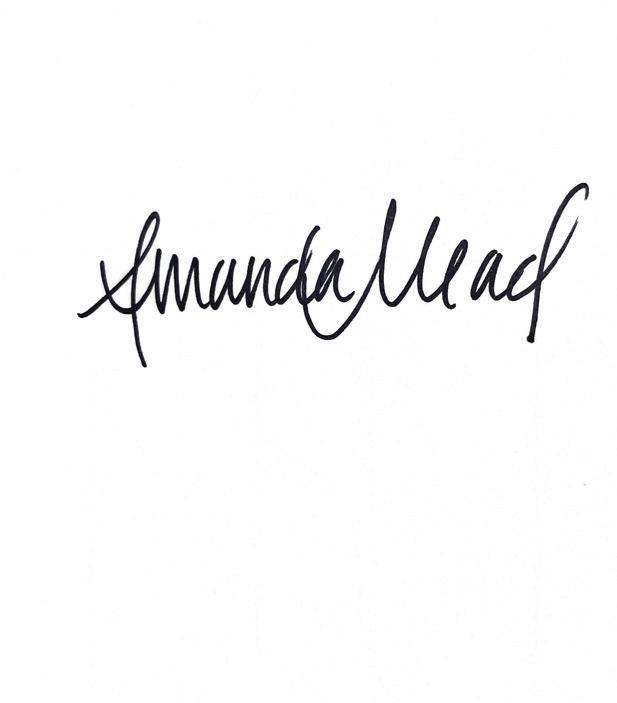

Welcome Patrons,
Thank you for attending tonight’s performance! We appreciate your support of the Lubbock Symphony Orchestra. The 2022-2023 “Symphonic Scenes” season promises to be outstanding. We are so excited to experience the wonder of music with you.
Tonight’s performance, and every performance since 1952, has been made possible in part by the Lubbock Symphony Guild. For 70 years, the Guild members have donated their time and resources to keep symphonic music thriving in West Texas.
I hope you enjoy the incredible talent of our remarkable Orchestra and value the educational and cultural contributions they provide to our community. I invite you to consider becoming a member of our Lubbock Symphony Guild. For more information, please visit our website at www.
63 2022-2023 SEASON
Lubbock Symphony Guild Senior Debutantes

Front Row Left to Right - Madeline Matthews, Emily Keister, Tatum Brown, Payton Harrison, Katherine White
2nd Row Left to Right - Maggi Underwood, Portia Clary, Madison Bigham, Anna McClendon, Blakely Biggs, Abby Harris
3rd Row Left to Right - Sydney Cranfill, Ava Hounshell, Sydney Lowe, Halle Henthorn, Ashtyn Bartley, Kaitlyn Caswell

Back Row Left to Right - Macy Hamel, Abigail St Clair, Emily Payne, Kathryn Kinnison, Chloe Conover, Elizabeth Kinnison, Natalie Caswell, Campbell Howe
Not Pictured -Regan Andrews, Adisyn Elrod, Ellis Fox, MaeAlice White
64
﹐ 806 ¾ 797 ¾ 0341 www.yellowhousedds.com
Proud supporters of the Lubbock
Dallen Ricks,
DDS & Mary Glasheen, DDS
Symphony Orchestra
Lubbock Symphony Guild Junior Debutantes

Front Row Left to Right - Alayna Bayouth, Hannah Feist, Kathryn Kothmann, Addison Burnett, Avery Schilling, Emme Hocker, Anna Everett, Jessica Foley
2nd Row Left to Right - Jillian Jones, Annabelle Bennett, AbiGayle Mills, Ava Campbell, Claudia Tepper, Campbell Carper, Reghan Rose
3rd Row Left to Right - Ava Lansdell, Skylar Tidwell, Emma Feist, Preslie Tarver, Berkley Bird, Olivia Needham, Christiana McCourt, Kathryn Cardelli, Jewel Naegele
Back Row Left to Right - Ella Scolaro, Mya Ballou, Lydia Carter, Alexandra Dannemiller, Madison White, Jeye Johnson, Olivia Phillips, Mia Capodagli, Kennedy Venable
Not Pictured - Kendall Cathey, Hannah Cooper, Preslee Edwards, Amelia Rodriquez, Emeri Tran
65 2022-2023 SEASON
Front Row Left to Right - ALondon Carlisle, Brentley Preston, Tierni Green, Ryann Grissom, Emory McCain, Ella Mendez, Emily Roark

2nd Row Left to Right - Ashlyn Simek, Kamryn Chandler, Claire Ancell, Maya Al-Hmoud, Sadie Callison, Camden McDougal, Jayci Lentz, Addison Kitten, Rylan Belle Raley, Olivia Elliott, Reece Watson, Taylor Harrison, Anne Edwards, Grace Gerwig, Aubrey White
3rd Row Left to Right - Bella Lampe, Brynlee Hogg, Madelyn Caswell, Teema Sharif, Reece Riddle, Haleigh McKee, Raegan Reed, Jencee Thompson, Maya Vermillion, Rylee Rose, Hope Hancock, Ella Murphree, Lauren Casey

4th Row Left to Right - Shiloh Roach, Elizabeth Johnson, Hannah Harvey, Sydney Smothers, Morgan Parker, Blair Belew, Remington King, Zimri Buckley, Olivia Mudd, Emily White, Bradie Smith, Lydia Pesterfield, Riley Newberry
Back Row Left to Right - - Anastyn Greaser, Raegan Lee, Hannah Pharies, Cambelle Fannin, Viviana Ziegner, lndie Williams, Bryleigh Norman, Kristen Mitchell, Ella Grace Bennett, Cora Clifford, Camryn Howe, Mia Chacon, Gabrielle Scherpereel


Not Pictured - Emma Claire Womble

66
Lubbock Symphony Guild Sophomore Debutantes Winner of the 2021-2022 Henderson Championship Cup All Saints Episcopal School allsaintsschool.org 806-745-7701 TOP HIGH SCHOOL IN TEXAS TAPPS 2A revised 2022-2 023 all saints episcopal school ballet lubbock ad_converted.indd 1 8/31/2022 12:20:54 PM
The Lubbock Symphony Guild has contributed more than $500,000+ to the Lubbock Symphony Orchestra since 1999. For information on how you can be a part of what makes it all possible, please visit LubbockSymphonyGuild.com We need you to help make it happen!

67 2022-2023 SEASON
There are those of us who make the music.
...then there are those of us who help make the music possible.
PANTONE 8383 METALLIC PANTONE 7624
LUBBOCK SYMPHONY GUILD (font - Novocento Wide/Adorn Pomander Custom-
upcoming concerts







































































































